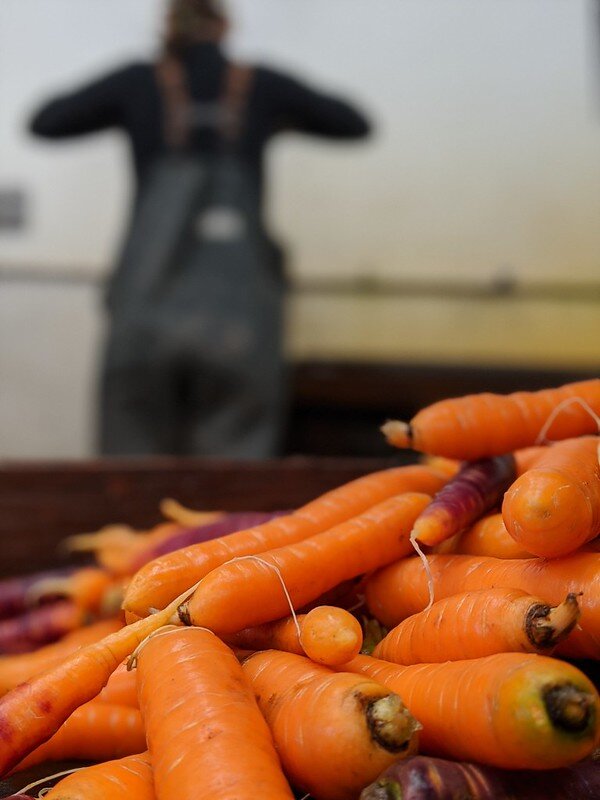It’s been a different kind of school year — before Covid most classes began when students looked at the teacher. During Covid, learning had to become more personal. Fortunately that individual approach is especially effective and needed when half the students are in class six feet apart and the other half are maybe miles apart with distance-learning from home.
In Gary Coyan's Chimacum classes, students are taking a more personalized approach. They are encouraged to look around and see what they want to learn and create. He sees himself more of a facilitator/collaborator than instructor, basing his approach on the Foxfire Heritage practices. He officially teaches art class, but also teaches gardening, cooking, and even the business of food in the same way a master artist in a studio would, through hands-on learning.
Like artists, students are in control of the creative/learning process—they can choose which topics inspire them, what “media” they want to work in, what tools that media requires, and then dig in. Sometimes they need to learn a new technique, or be inspired by historical work, but when finished they own the total experience and the result is theirs to enjoy, sell, or share.
At-home Students
At-home students raise the participation bar. To help them focus on a topic (for example gardening), Gary calls each student to find out what "media" they have around them to work with -- the family veggie garden, flowers, grass lawns… sometimes Gary will arrive at their home with a container, some dirt, and seeds for them to start the growing, tending, and picking of plants. Eventually they will get to eat their art.
In-School Students
This week Gary's in-school students are firing up the pizza oven that arrived last year just as Covid hit and schools closed. The spring outdoor classes are perfect for spaced-apart learning. Students will make the perfect personal pizza and all the culinary science that goes with each step. As the gardens start growing, plants that the students had a hand in germinating may end up as toppings.
Outdoor Pizza 101
Full-emersion pizza making begins by knowing your local flour producer. Students learn about the different kinds of flours and which tastes the best to them--Finnriver Spelt flour won. Next they spend a class learning proper dough making techniques, and how the gases created during an overnight rest in the refrigerator provide that distinct pizza crust flavor and stretch. (Thank you Alton Brown for the tips.) The toppings are also a lesson in food handling and culinary knife use. Once in the outdoor kitchen, the dough balls are hand stretched into personal sized pizzas and students can choose which toppings they want on their creation before sending them into the flames. Gary estimates they can cook three mini-pizzas at a time in under 8 minutes.
Whether it's home-grown and cooked or school-grown and baked, it's all learning-by-doing, taking pride in the art of accomplishment, and being able to share the knowledge.


















